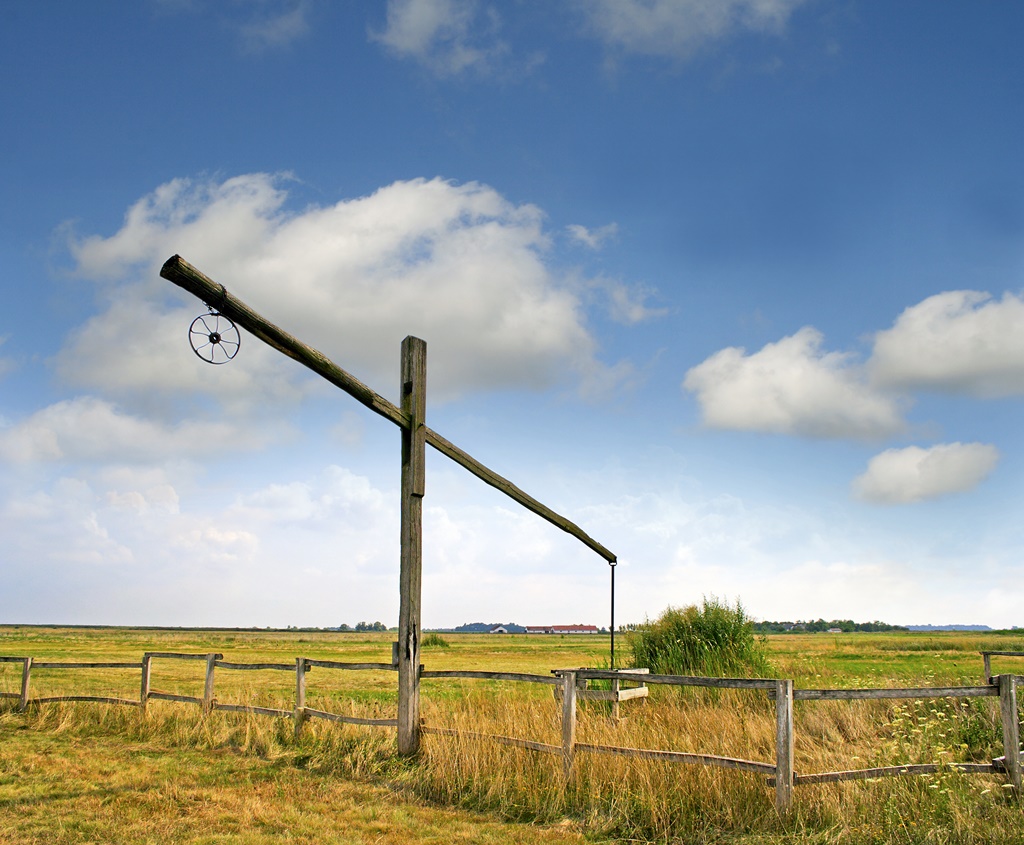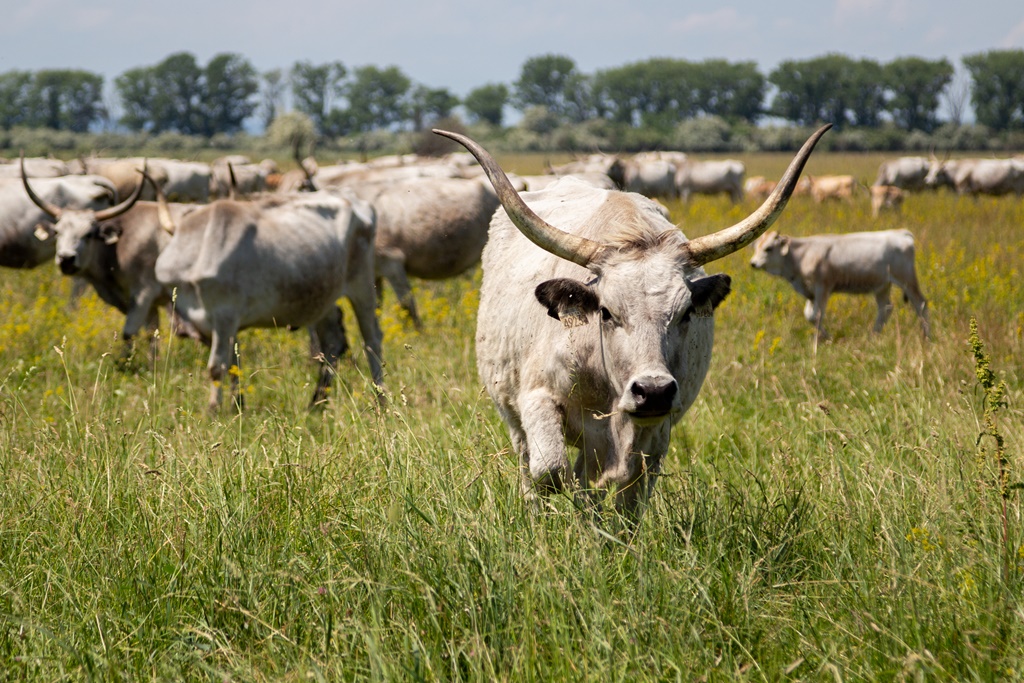National Parks in Hungary
There are 10 national parks in Hungary varying in landscape. The mountainous terrains are accompanied by rivers which provide the most amazing vegetation. Such areas are most commonly protected natural areas. If you’re up for a hike, these trails will offer you viewpoints, creeks, unexpected glens and charming villages as trailheads. What is particular about some of these national parks is the Hungarian plain with salt lakes, saline steppes, and treeless plains. There you will often encounter Hungarian cattle. Parks also abound in historical heritage, some of them protected by UNESCO. Therefore, don’t miss out on the castles and manors mentioned below.
Here is the list of all 10 National Parks in Hungary!
Hortobagy National Park
What Hortobagy is known for are the saline and loess steppes, swamps, lakes, Hungarian grey cattle, racka sheep and numerous species of birds. When in Hortobágy National Park Visitor Centre, you can choose programmes like visiting water buffalos or learning about the shadoof, a water-irrigating tool. You can watch the horseman show or birdwatch at one of the many Hortobágy fish ponds as part of more special tours. You could even try stargazing, but ask for info beforehand, as there are set times for observing the night sky. One of the must-see sights is the famous Nine-Holed Bridge at the end of the village. You can visit an exhibition at the Shepherd Museum then cross the bridge to try the local specialties in Hortobagy inn. From the Shepherd Museum, it is possible to approach the Hortobágy-Malomháza. It is a game park which offers you a sight of a wolf, a vulture and a pelican and wild animals like a wildcat, a fox and many more.

Kiskunsag National Park
Kiskunsag National Park is declared a Biosphere Reserve by UNESCO. Among important sites, there are Bugac Juniper-Poplar groves with two sandy dunes from around the 17th century in the middle of steppes. The reconstructed village Tiszaalpár shows the customs from the time when Hungarians conquered the Carpathian Basin. There is also the second biggest alkaline steppe called Upper Kiskunsag Steppes with saline meadows and sandy ridges. Rich Peszéradacs Meadows are filled with sedge meadows and purple moor grass swards and Mikla Puszta is mainly salt marshes. You can go camping or bathing in lakes Szelid, Vadkert, Kunfehér and Sós.

Bukk National Park
Bukk National Park is situated in the Bukk Mountains, near the city of Miskolc. According to travellers, it is ranked as one of the top 50 best national parks in Europe. The biggest attraction is exploring the forest. Therefore, go hiking on Szalajka Valley Nature trail that follows a long stream. The steps of the undulating stream create cascades all along. Visit the romantic palace hotel in Lillafüred, situated on the shore of Lake Hàmori. It offers a beautiful view of the Szinva waterfall. Right next to it are the two most famous caves of the area, Szent István Cave and Anna Cave. Among other attractions, there is the medieval castle, Diósgyőr, in Miskolc and the city of wine, Eger. The price you will pay for the guided tours is around 1200 HUF.

Aggtelek National Park
Aggtelek National Park is located to the north of the country, along the border of Slovakia. You can explore the park by the designated paths done to protect the habitat of the wildlife. This offers visitors an insight into the wilderness as well as the world of stalactites and stalagmites in the underground caves. Out of the 280 limestone caves, Baradla Cave is the biggest and most impressive one. It is also considered the largest stalactite cave in Europe. The cave is known as the Baradla-Domica system as it continues in Slovakia where it is called Domica. Those suffering from asthma often visit Peace Cave that may have health benefits. The area also has cultural sights, the two most popular ones being The Pauline Monastery and the L’Huillier Coburg Castle. The tickets to the park cost around 2500 HUF.

Fertő-Hanság National Park
Fertő-Hanság National Park embraces Lake Ferto and the surrounding area. It was opened together with the connecting Austrian Neusiedler See National Park. The lake is the third-largest one in Central Europe and, thanks to its landscape, is a World Heritage Site. The wind causes the water that is approx 1 m deep to change the shape and the size of the lake. You can enjoy an early morning guided canoe tour there. Expect rare birds like red-breasted geese and birds of prey such as white-tailed eagle, meadows filled with plants like iris, yellow lady’s slipper and fly orchid. You can also visit one of the biggest thatched-roof buildings in the country named Kocsgavar. Once Esterházy manor today is a Lászlómajor Visitor Centre. The entrance fee is around 1200 HUF.

Danube-Drava National Park
Danube-Drava National Park is located in the southwest of Hungary. The best is to go to the Visiting Centre in the village Szaporca. Endemic species include the black hawthorn, known also as the Hungarian hawthorn and the Drava caddis fly. They are known for being used in art rolled in gold and other jewels. Guided hiking and canoeing tours are occasionally organized. However, you have three educational trails at your disposal. There, you can get to know the wildlife for the price of approx. 1500 HUF or rent a kayak/canoe for the price of 3000 HUF.

Koros-Maros National Park
Koros-Maros National Park consists of 13 smaller areas with its center in the small town of Szarvas. There, you can visit the Kosorsvolgyi Visitor Centre and learn about the best way to explore it: by bike or canoeing! There is also an animal park near the Centre. Canoeing the Koros or Maros river is a great opportunity to see the floodplain forests. Those interested in bird-watching should visit Lake Fehér. Other national park attractions include a fortress Gyula in the Gyula town that also offers a thermal spa.

Balaton Uplands National Park
Balaton Uplands National Park is a huge area that embraces 5 protected areas situated on the northern shore of Lake Balaton. Explore the forests and rock formations in Pecsely Basin, Kali Basin and Tapolca Basin. What is attractive about the Tapolca basin is the famous Badacsony wine region situated at the foot of the extinct volcano. Also, do not miss the Tapolca Cave Lake and experience a boat ride across the mystical water. Other areas worth visiting include Tihany Peninsula where you can harvest lavender during a lavender festival and the Keszthely mountains. Go a bit further and hike the trails in the Bakony Mountains to cool in the shade of gorges, explore the numerous caves and castle ruins.

Danube-Ipoly National Park
Protected areas and nature reserves of Danube-Ipoly National Park include Pilis, Visegrád, and Börzsöny Hills, a part of the Ipoly Valley and some areas of Szentendre Island. Along with Bukk National Park, it also found its place among the top 50 national parks in Europe. You can visit the park for free, however, when visiting the trails below, you have to pay for the parking. The best panorama in the park is the one on Danube Bend. Start in a small village Dömös and get to the trail Prédikálószék in the Pilis Mountains. Able adventurists can go through the Rám-szakadék glen and follow a stream by steps with an iron chain. You can only go up, so use the Lukács-árok trail to get back. Access Julianus viewpoint of the Danube Bend, in Börzsöny Mountain if going from the direction of town Nagymaros.

Orseg National Park
Orseg National Park embraces Őrség, Vend country, valley of River Rába, the Inner-Őrség and Szentgyörgy Valley. It offers charming landscapes of self-supporting farms in villages with a long tradition of pottery making. As well, there are a lot of hills engraved by streams and clean air. So be sure that cycling will be a whole experience. Due to the high amount of rain, there are a lot of green meadows. Moor fields that are the remains of the ice age offer mushrooms that are in abundance here regarding the whole country.





